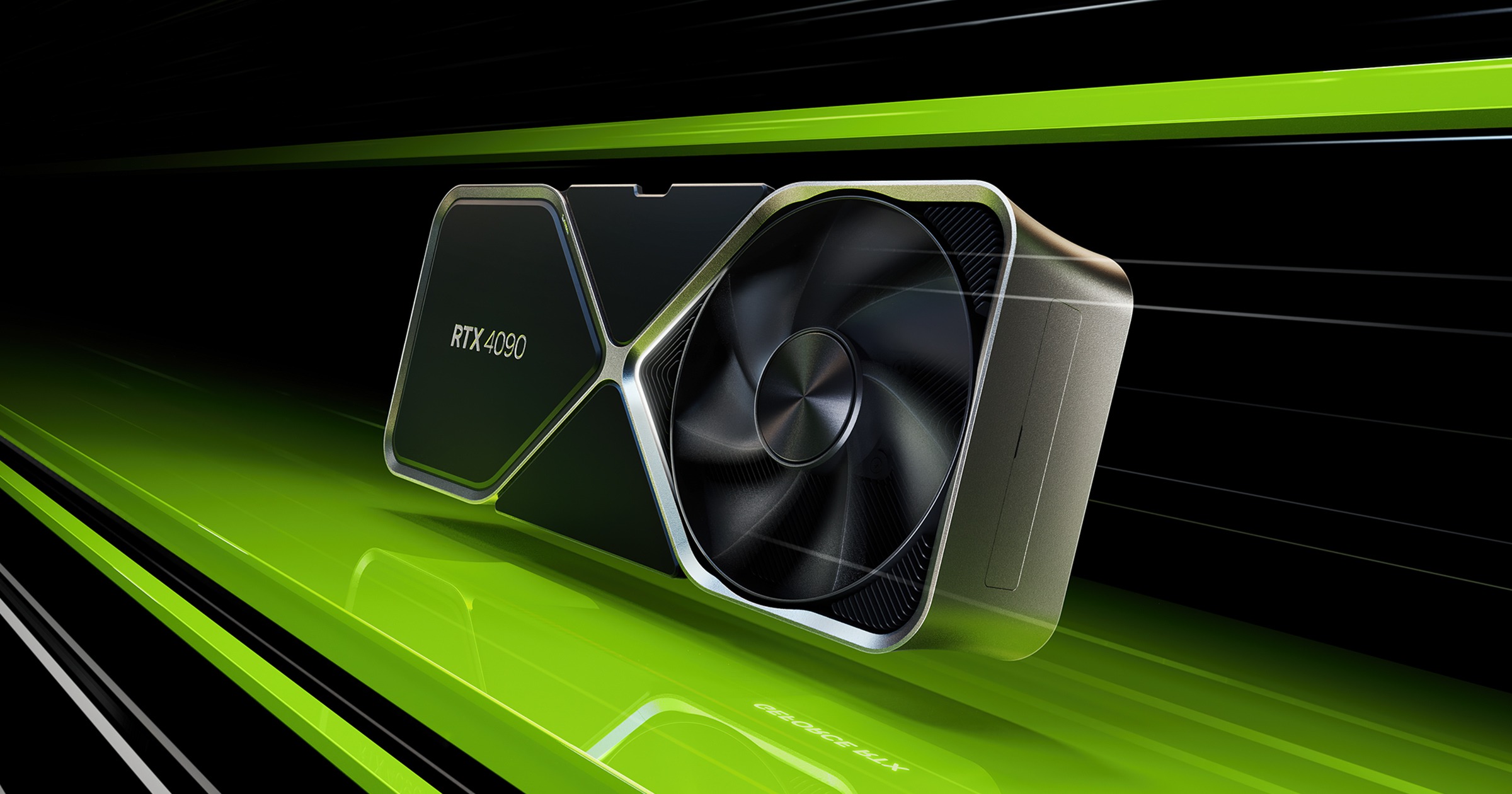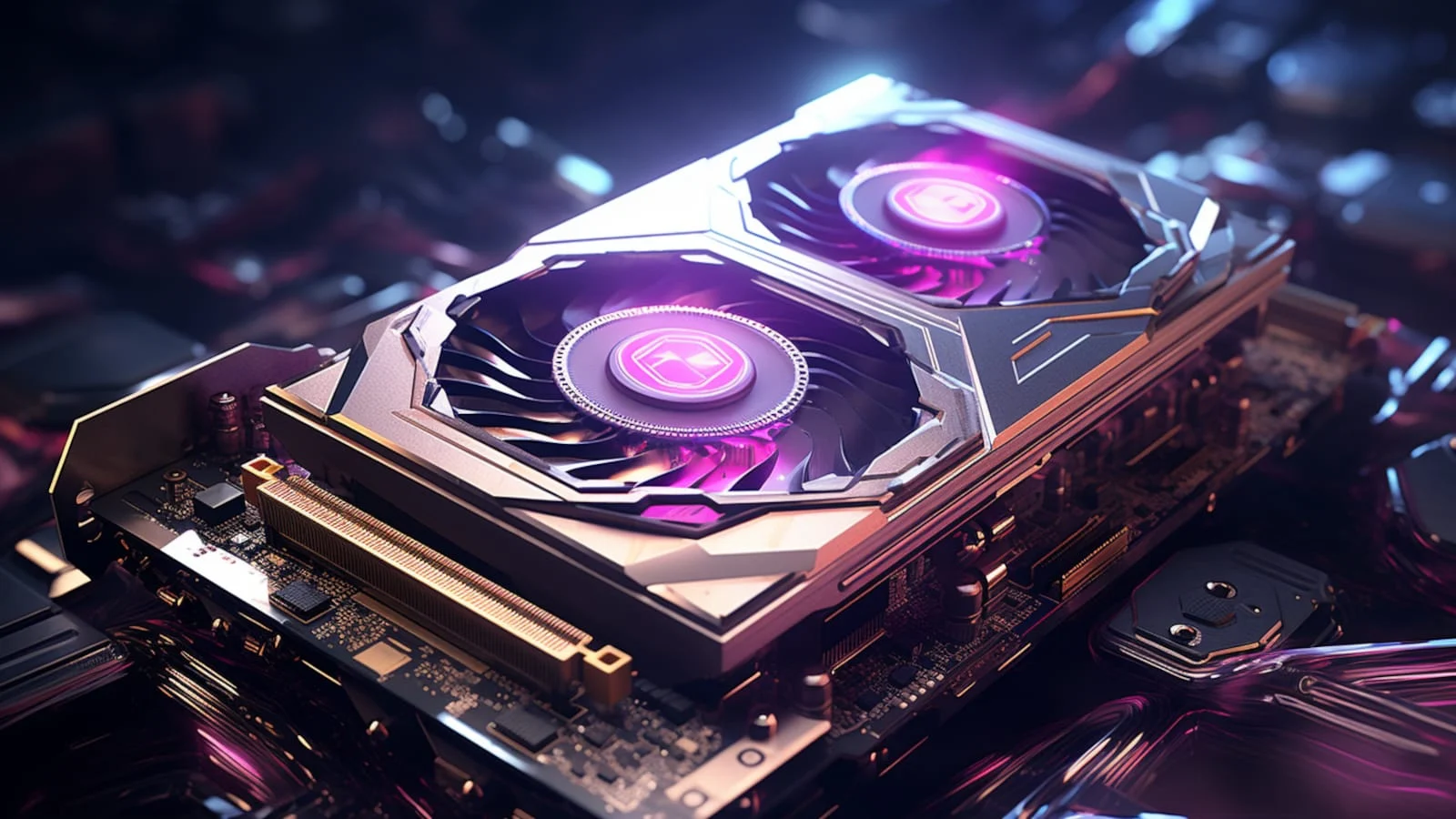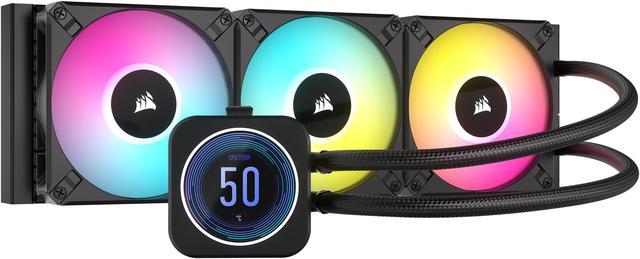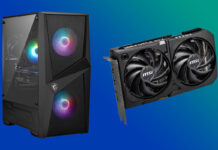
The Graphics Processing Unit (or GPU) is a specialized piece of your computer with many talents. Traditionally, it’s been used to enhance your computer’s visuals. However, in recent years, GPU product shortages occurred after the realization that it can also aid machine learning functions and mine cryptocurrency. While these new findings led to some GPU shortages during the pandemic, stock levels have normalized. You now have plenty of options to choose from. In this buying guide, we’ll discuss how you can find the right compatible GPU for your computer.
Table of contents
- Understanding GPU compatibility basics
- GPU and Motherboard compatibility
- GPU and CPU compatibility
- Power supply and GPU compatibility
- Cooling solutions for GPUs
- External GPU compatibility
Your GPU processes data during complex graphic tasks to create the high-quality visuals you see on your screen. With the increasing popularity of graphically intense video games and the accessibility of graphic-heavy software like video editing programs, many computer users now need dedicated graphics processing. Relying solely on the CPU isn’t sufficient anymore. Depending on its intended use, the GPU can be a crucial part of your setup, affecting your computer’s performance and ability to handle demanding tasks.
Before buying any GPU, consider various compatibility factors, ranging from physical space limitations to potential compatibility issues with older motherboards. These factors can lead to decreased performance and impact your overall experience. This guide will help you navigate these concerns. Note that there are three main GPU manufacturers: AMD and NVIDIA have been longstanding competitors, while Intel has recently entered the market. Other brand names may offer GPUs, often featuring additional options like cooling solutions, but typically use chipsets from one of these three manufacturers.
Understanding GPU compatibility basics
Your GPU converts complex data into stunning high-quality visuals on your screen. While your CPU plays a role, the increasing popularity of graphically intense video games and advanced functionalities like video editing and complex graphic rendering now require dedicated graphics processing. This ensures cleaner visuals and faster performance, transforming your computer experience.
What does GPU compatibility mean?
Before you jump into buying a new GPU, you should really have a set list of things in mind that you’d like your GPU to do for you. If all you’re using your computer for is simple and traditional tasks like surfing the web and streaming movies and music, you may not even need a dedicated graphics card.
If you’re using your computer to play video games or are using it to render videos, then you’ll definitely want to consider a standalone GPU. However, the questions don’t stop from there. If you don’t play graphically intensive video games and are only rendering short 1080p videos, you may be able to get away with a lower priced option. However, if you are playing really intense, graphic rich games capable of high resolution outputs and refresh rates and plan to render lengthy or really high definition videos, budget enough for a really good GPU. Some video rendering software out there may still rely heavily on the CPU, but lean on the GPU for complex color shading and transitions, but more situations nowadays rely solely on the GPU’s output. These programs will even draw and pull on all of your GPU’s resources, so be aware of that.
Then there is the physical compatibility aspect and whether the GPU you’ve chosen will fit. This fit includes whether you have the compatible PCIe slot open to plug into on your motherboard. You should be plugging your new GPU into the PCIe x16 slot for the best performance possible. In many motherboards, this is typically the top slot. This ensures the fastest data transmissions and the best overall output.
Key factors affecting compatibility
In addition to issues like using the wrong slots or outdated technology, other factors can impact compatibility. Graphics cards are sizable and take up a lot of space in your case or tower. You need to ensure that you have enough room in your case not only to accommodate the graphics card, but also to dissipate heat. GPUs can run very hot and need help staying cool. Poor ventilation will hinder performance drastically and could impact the GPU’s lifespan. There are additional cooling options that will be discussed later in the guide.
Another crucial factor to be aware of is power needs. Dedicated GPUs may require more power than your power supply currently provides. In this case, you may need to look into purchasing a higher capacity power supply. Check the GPU you’re considering to understand whether you have enough power to support it, or determine if you need an upgrade.

GPU and Motherboard compatibility
The Peripheral Component Interconnect Express (PCIe) slots on a motherboard connect your PC’s peripherals to the motherboard at high speed. You will find a variety of slots on every PC motherboard, which you can use to connect these peripherals. Each PCIe slot has a number beside it, such as x1, x4, x8, x16, or x32. This number indicates how many “lanes” the slot uses to transfer data. Most GPUs perform best when plugged into the x16 slot. If you run your GPU in a slot that is not optimized for it, you risk decreased performance. This decrease may also occur if your motherboard has a physical slot wired for fewer electrical connections. For instance, a PCIe x16 slot might only support the equivalent of x4 electrical connections. You can still plug your GPU into this slot, but expect it to run at x4 output, resulting in reduced performance.
We’re also currently in the 5th generation of PCIe slots (though PCIe 6.0 is on the horizon,) and cards are backwards compatible. If you have 4th generation slots on your motherboard for example, you can still use a 5th gen card.
While not always necessarily, it’s also recommended that you update your BIOS if you’re looking at a newer GPU in order to fix any compatibility issues that might exist from having older, potentially nonoptimal software trying to support newer hardware.
GPU and CPU compatibility
Your CPU is responsible for handling all the basic operations of your computer. It’s the heart of your system, running programs, applications and your operating system. In games, the CPU handles tasks like sound and basic game functions and determines what to send to the GPU. The GPU processes advanced graphics, including detailed rendering and detailed effects. It will also handle aftereffects, like colour distortion that changes the nature of your game. If you check out the GPU Buying Guide, you’ll find out more about some of the different features of the 3 main GPU manufacturers and how companies like NVIDIA and AMD have utilized proprietary technology to enhance gaming experiences.
If you’re familiar with baseball, think of the GPU and CPU like the “battery” (the term used for pitcher and catcher). Like this partnership in baseball, they work best when they are highly compatible. This is why you’ll often see specific pitcher-catcher combinations on teams, and the the same principle applies to PCs. If you don’t pair the right CPU and GPU, you could create a process bottleneck. Bottlenecking occurs when one part of the partnership (be it your CPU or GPU) is too powerful for the other and is throttled by it. This will lead to decreased performance. It’s best for you to test capacity to understand whether you have a bottleneck and whether you may need a new GPU or CPU upgrade for better performance.
The best CPU and GPU Pairings vary based on your needs. For example, as of this writing, the NVIDIA GeForce RTX 4090 is the highest benchmarking GPU available on Best Buy’s website. It’s recommended to pair it with the AMD Ryzen 7950X, 7800X or Intel Core i9-14900k to maximize the performance on both sides.
For a more affordable option, you can pair an Intel i-Core 14700k or that AMD Ryzen 7800x with NVIDIA GeForce RTX 4080 GPUs. If you’re operating on a budget and are looking at GPUs in the $400-700 range, you could consider pairing them with the AMD Ryzen 7600x or Intel Core i5-13600. This range is where you’ll still find some great GPUs capable of handling many 1080p and some 4k applications.
Power Supply and GPU compatibility
Calculating power requirements
Your GPU can be a pretty intense power hog and will need a sufficient power supply in order to use it. This may also mean that if you’re upgrading your GPU, you may also need a new power supply. It means you might have to invest a bit more, but it’ll be worth it in the end. It means you might have to invest a bit more, but it’ll be worth it in the end. What sort of power supply and how much power will you need is a different question. There are a handful of power supply calculators out there that might be able to help you understand this better and choose the right power supply.
Ensuring your Power Supply Unit (PSU) has the necessary connectors
The more powerful the graphics card, the more likely it will require multiple connections to the power supply due to its higher power draw. Some of the highest end graphics cards out there might need 6 pins, 8 pins or even multiple plug-ins. Make sure that you check your Power Supply Unit to ensure that you have the right connections to support the GPU’s needs or vice versa. That said, you’re also going to need to make sure that your PSU and CPU have the right amount of power draw to support your GPU.
Recommended PSUs for different GPU tiers
Not every GPU requires the same amount of power. As established earlier, the more powerful the GPU, the more power you’re going to need from your PSU. However, the recommended additional wattage will vary depending on your CPU and GPU combination. Here’s some high end examples of how much power you’ll need based on your CPU/GPU combination.
| GPU | CPU Example | Wattage Recommendation |
| Highest end (ie. NVIDIA GeForce RTX 4090 or AMD RX 7900 XT/XTX) | Intel Core i5 / AMD Ryzen 5 Intel Core i7 / AMD Ryzen 7 Intel Core i9 / AMD Ryzen 9 | 850w or above 1000w or above 1200w |
| Higher end (ie. NVIDIA GeForce RTX 4070 or AMD RX 7800 Series) | Intel Core i5 / AMD Ryzen 5 Intel Core i7 / AMD Ryzen 7 Intel Core i9 / AMD Ryzen 9 | 650w or above 750w or above 850w or above |
| Mid End (ie. NVIDIA GeForce RTX 4060 or AMD RX 7600 Series) | Intel Core i5 / AMD Ryzen 5 Intel Core i7 / AMD Ryzen 7 Intel Core i9 / AMD Ryzen 9 | 550w or above 650w or above 650w or above |
| Lower End (ie. NVIDIA GeForce RTX 3050 or AMD RX 6400 Series) | Intel Core i5 / AMD Ryzen 5 Intel Core i7 / AMD Ryzen 7 Intel Core i9 / AMD Ryzen 9 | 450w or above 550w or above 550w or above |
Case and GPU compatibility
When selecting a GPU, ensure your case can accommodate it. Some GPUs are bulky and need ample space for installation and ventilation. Adequate airflow is crucial to prevent overheating. Opt for towers that support larger GPUs and allow for additional cooling options. In addition, you’ll want to make sure that the case you’ve chosen fits your Motherboard too. Follow this link over to all the case choices BestBuy.ca to ensure that you’ve chosen the right case that fits your Motherboard size and GPU

Cooling solutions for GPUs
While some GPUs come with their own cooling fans, you may want to invest in additional cooling for safety. As we’ve established, GPUs run hot. Ensure your case has proper room and ventilation to dispel heat, and consider adding extra cooling solutions to prevent overheating. If your GPU gets too hot, its performance will be throttled to avoid damage, which can also lead to system crashes. Overclocking your GPU without additional cooling increases the risk of damage.
If you’d like to add more cooling to your PC, many cases designed for high end gaming will include additional fans, but you can also add extra cooling. Depending on your preference and needs, you can add additional air fans or liquid cooling. While cooling and cases both may seem an added expense to your overall system, they are both crucial to ensuring that you get the absolute maximum of your investment. You can find a wealth of different cooling options on Best Buy’s website, including the best selling and most popular ones at the top of that page.
External GPU compatibility
If you have a scenario in which you cannot support a traditional PC setup (like needing the portability of a laptop or not having the space to support a desktop PC case,) you may be able to lean on an external GPU instead. Laptops cannot accommodate higher end GPUs, nor can their internal components be upgraded easily. An External GPU is an enclosure that houses a desktop sized GPU outside of the PC itself and connects through a dock to the computer. It may also include additional USB or display slots. Examples of good eGPU enclosures include the Razer Core X or the ASUS Republic of Gamers XG Station 2. If you are an ASUS Republic of Gaming Laptop Owner you can also look to an all-in-one external solution like the ASUS ROG XG Mobile External Graphics Card Docking Station.
Other helpful information for GPU compatibility
- Understanding the amount of VRAM you need
Similar to how RAM works on your CPU, your GPU’s dedicated VRAM processes data specifically for your graphical output. The amount of VRAM you have can significantly impact how a game looks. While it may seem that more VRAM is always better, this isn’t necessarily the case. When choosing between multiple VRAM options for a specific video card, it might be wise to pick the one with more VRAM, as it could delay the need for an upgrade. However, as GPUs improve and newer models emerge, you might find that a card released last week with 8GB of VRAM outperforms a previous generation model with 16GB of VRAM in benchmark tests. Differences in components can lead to better performance even with less VRAM. Researching and reading reviews about the cards you are interested in will help you make a more informed decision.
- Matching your graphics and monitor’s output.
If you’ve purchased a high-resolution monitor, ensure your graphics card can match its capabilities for optimal performance. Modern high-end games, especially in 4K, push your GPU to its limits, so having a capable graphics card is crucial for enjoying high refresh rates and frame rates.
High-end GPUs often have higher demand and lower supply than monitors. If you plan to upgrade your monitor eventually, investing in a superior GPU now isn’t a bad idea. It saves you from the costlier and more arduous task of upgrading both components simultaneously in the future.
- Reading reviews and tier charts
The last tip for finding the most compatible GPU for your PC is to read reviews and benchmark those against your specific needs. A lot of this has been discussed throughout this guide and as you can see, there isn’t really a one size fits all type of approach if you have pretty complex needs for your graphic card. Not when there are dozens, if not hundreds of different cards to choose from. That being said, most graphics cards out there have been reviewed. They might be reviewed by your peers, they might have been reviewed by the bloggers at Best Buy or they might be on other tech websites. Nevertheless, chances are somebody has reviewed the GPU (or GPUs) you have an eye on and can give you an in-depth opinion on whether it is in fact the right fit for you.
One of the things you may also find handy are tier charts. Some tech websites have tier charts where they will benchmark different cards they’ve reviewed into tiers based on factors like affordability, VRAM and more. These may ultimately help you find the right card that fits within your personal compatibility range, and then may also help you figure out whether it’s technologically compatible with what you’re working with. Much more of this is discussed in the GPU buying guide. The PC components buying guide will help you understand all the different parts that make up a computer and how they work together.
Click here to see all the articles in the “PC Builder Lab” series.
It’s time to find the right GPU for your needs!
There is a lot to consider when looking for a new GPU. Not only are you looking at upgrading your current experience, but there are a lot of other things to consider outside of it too, like making sure you’ve got the right hardware to support it, you’ve taken the proper safeguards to protect your new investment and that you’ve got the optimal elements (like monitors) to show it off. Whatever you’re looking for, chances are the right GPU (and everything else you need to build or upgrade your PC) awaits you at Bestbuy.ca.







